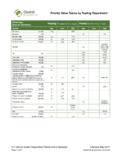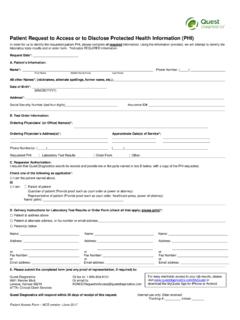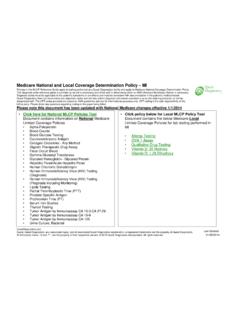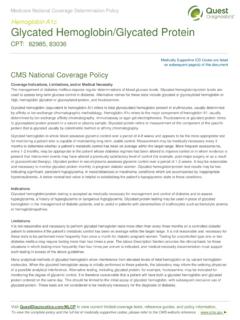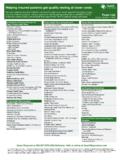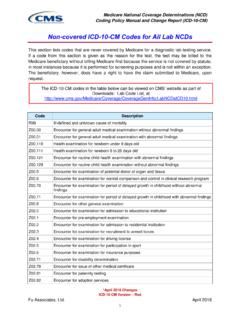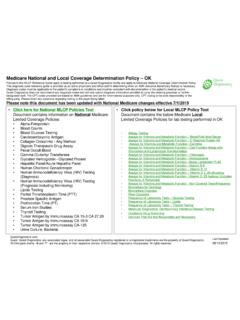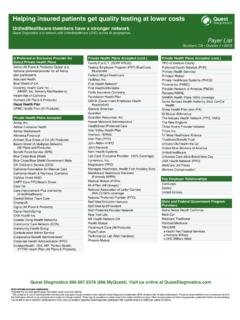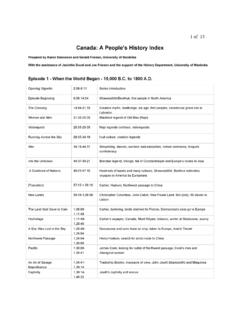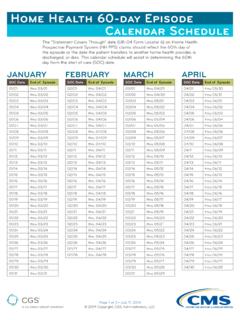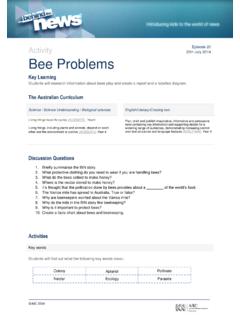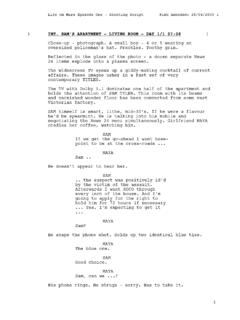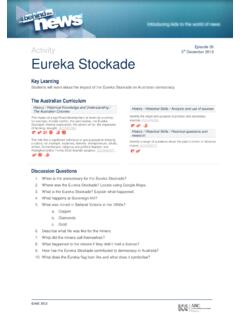Transcription of Individual with Documented Thrombotic Episode …
1 Individual with Documented Thrombotic Episode or at High Risk First Line Testing Second Line Testing Rule Out Test Interpretation Prothrombin Gene Mutation Normal Prothrombin 20210G>A mutation present Individual with Documented Thrombotic Episode (s), Strong Family History of Thrombosis, and Negative First Line Tests Excess Factor VIII Repeat in 6-8 weeks to confirm Normal Elevated APCR/FVL Acquired APCR or mutation other than factor V Leiden Normal Abnormal Hyperhomocysteinemia Normal >15 M/L Protein C Deficiency Normal Decreased Normal Decreased Type II deficiency Type I deficiency Antithrombin Deficiency Protein S Deficiency Normal Decreased Antiphospholipid Syndrome Repeat any abnormal tests in 12 weeks to confirm Normal Abnormal Correction (normal) No correction (abnormal) Normal PTT-LA or dRVVT Abnormal Myeloproliferative Neoplasms Normal Abnormal Occult Cancer Normal Abnormal Normal Decreased Normal Decreased Type II deficiency Type I deficiency Content reviewed 02/2013 Positive Negative PTT-LA and dRVVT, Cardiolipin and 2-GPI Antibodies Factor VIII Activity APCR Plasma Homocysteine 20210G>A Mutation Protein C Activity Free Protein S Antithrombin Activity CBC with Smear Basic Blood Tests Hexagonal Phase or dRVVT Confirm Factor V Leiden/HR2 DNA Analysis Vitamin B6, B12, and folate levels Protein C Antigen Antithrombin Antigen BCR-ABL1 Rearrangement or JAK2 Mutations Protein S Activity & Antigen (Free & Total)
2 To distinguish type I, II, and III deficiencies C4 Binding Protein to exclude transient deficiency or acute phase reaction Female CEA CA125 Male CEA PSA dRVVT Mixing Study if dRVVT confirm + Quest, Quest Diagnostics, any associated logos, and all associated Quest Diagnostics registered or unregistered trademarks are the property of Quest Diagnostics. All third party marks - and - are the property of their respective owners. 2013 Quest Diagnostics Incorporated. All rights reserved. An Individual with a Documented Thrombotic Episode should undergo a complete medical evaluation to rule out conditions associated with thrombophilia not diagnosed by first line testing, eg, nephrotic syndrome, diabetes mellitus, etc. High risk individuals are those with a strong family history of thrombosis and/or those with acquired risk factors, eg, obesity, prolonged immobilization, etc.
3 All non-genetic testing should be repeated in 6 to 12 weeks to reduce the likelihood of false-positives. Some assays are affected by anticoagulants or the acute Thrombotic process. Basic blood tests for occult cancer evaluation may include CBC, erythrocyte sedimentation rate, liver and renal function tests, urinalysis, protein electrophoresis, and chest radiography. In patients being evaluated for occult cancer, ultrasound and/or computed tomography (CT) of the abdomen and pelvis may be performed along with the tumor marker tests. Second line testing is for the identification of rare causes of thrombophilia and recommended for individuals with a Documented Thrombotic Episode (s), a strong family history of thrombosis, and negative first line tests. APCR/FVL indicates activated protein C resistance/factor V Leiden; PTT-LA, partial thromboplastin time-lupus anticoagulant; dRVVT, dilute Russell s viper venom time; and 2-GPI, beta2-glycoprotein I.
4 This figure was developed by Quest Diagnostics based on references 14-17. It is provided for informational purposes only and is not intended as medical advice. A physician s test selection and interpretation, diagnosis, and patient management decisions should be based on his/her education, clinical expertise, and assessment of the patient. Figure. Testing Algorithm for the Diagnosis of Thrombophilia in individuals with a History of Thrombosis or Those at High Risk Coagulation Factors IX, XI Lipoprotein (a) Dysfibrinogenemia Evaluation Plasminogen PAI-1 4G/5G Polymorphism and Tissue Plasminogen Activator (TPA) PNH with FLAER
